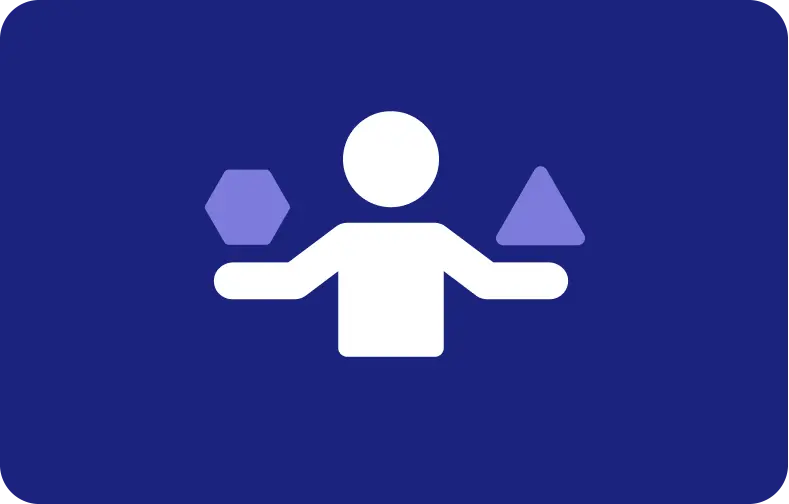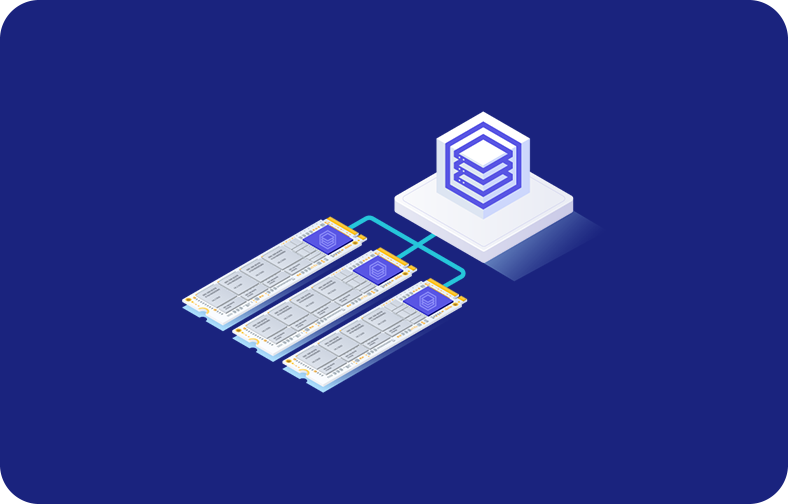Podman vs Docker: A Guide to Containerization Choices
.png)
For many of us working with containers, the world has long been defined by a single name: Docker. It's the tool that introduced so many of us to containerization, and for a long time, it was the only game in town.
After all, Docker works, it's familiar, and changing tools feels like unnecessary friction. But Podman is a fundamental rethink of how containers should work, that addresses Docker's most persistent pain points.
With major enterprises adopting Podman as their primary container engine and security-conscious organizations increasingly questioning Docker's daemon-based architecture, the Podman vs Docker debate has evolved from academic discussion to practical necessity.
So, is it time to leave Docker behind, or is there still a place for the original? Let's dig into what makes these two container platforms tick, where they excel, where they stumble, and most importantly, which one deserves a place in your development stack.
Understanding the containerization landscape
To make informed decisions about containerization tools, it's vital to understand how Docker and Podman approach container lifecycle management.
Docker represents the original containerization platform that revolutionized how we deploy containers and manage container images. The Docker engine operates through a client-server architecture where the Docker daemon serves as the central orchestrator for all container management tasks. Docker daemon runs with root privileges acts as an intermediary between your Docker commands and the actual container runtime.
When Docker users execute commands through the Docker CLI, they're communicating with this daemon through a REST API, which then manages the complex work of container processes and resource allocation.
Docker’s architectural approach creates a centralized control point where all container operations flow through a single daemon process. The daemon model provides certain advantages, such as consistent resource management and centralized logging. It also introduces constraints and security considerations that become more apparent as deployments scale and security requirements become more stringent.
Unlike Docker, Podman operates as a daemonless container engine, meaning there's no central service consuming resources or requiring root access when containers aren't running. Instead of relying on a daemon, Podman directly forks container processes, making each Podman container a direct outgrowth of the Podman process that created it.
Podman’s approach fundamentally changes how multiple containers integrate with your operating system and existing system management tools.
Understanding this architectural difference is crucial because it affects everything from security posture to resource utilization patterns, and as a result, directly influences how these tools align with your specific operational requirements and organizational constraints.
Can Podman fully replace Docker?
Podman was designed to offer a complete alternative to Docker, but understanding where this replacement works seamlessly versus where it requires workflow adjustments is essential for successful migration planning.
The key to answering this question lies in examining both the surface-level compatibility and the deeper architectural implications.
In practice, the majority of Docker commands have direct equivalents in Podman commands, creating a smooth transition path for basic container operations. The compatibility runs so deep that many Docker users can alias 'docker' to 'podman' and continue their existing workflows without immediate disruption.
If your primary activities involve building container images, launching containers, and performing routine container lifecycle management, you'll find that Podman CLI mirrors Docker's command structure almost exactly.
This command compatibility extends to most fundamental operations. When you execute podman run, podman build, or podman push, you're using syntax that directly corresponds to Docker's command structure.
The underlying container runtime standards ensure that container images built with either tool work seamlessly across both platforms, which means existing Dockerfiles require no modifications to work with Podman.
The complexity emerges when examining Docker Compose workflows and advanced container orchestration requirements. While Podman has made significant progress with Podman Compose, teams with complex multi-container applications might encounter edge cases where their existing Docker Compose configurations require adjustments.
Podman's networking model differs from Docker's approach, particularly in container-to-container communication and network isolation strategies.
Simply put, the networking differences stem from Podman's daemonless architecture, which handles network creation and management differently than Docker's centralized daemon approach. While these differences often represent security improvements, they can require workflow adjustments for applications that depend on specific Docker networking behaviors or assume certain network topologies.
Within production environments, Podman often provides superior capabilities around security and system integration. Podman’s rootless containers by default and the elimination of the Docker daemon running with elevated privileges, make it particularly attractive for organizations with strict security requirements.
The question of replacement becomes less about technical capability and more about operational readiness and team adaptation to the architectural differences.
What are the disadvantages of Podman?
While Podman addresses many limitations in Docker's architecture, it introduces challenges that teams must consider. Understanding these limitations helps organizations plan realistic migration timelines and avoid unexpected complications during the transition process.
Despite Podman's Docker-compatible command syntax, subtle behavioral differences can challenge experienced Docker users who have developed muscle memory around Docker's specific behaviors.
The way Podman handles container networking, volume management, and advanced features differs enough that teams typically need time to understand these nuances. Think of this as switching from an automatic transmission to a manual transmission in a car. The basic driving principles remain the same, but the operational details require conscious adjustment and practice.
The ecosystem surrounding Podman still lacks some specialized tools and integrations developed specifically for Docker over many years of widespread adoption. This ecosystem gap becomes particularly apparent when teams rely on specific monitoring tools, deployment automation platforms, or development environment integrations that were built with Docker's API and architectural assumptions in mind.
Docker Desktop created a polished development experience with comprehensive container management through both command-line and graphical user interface options. While Podman Desktop is improving rapidly, it doesn't yet match Docker Desktop's feature completeness, particularly for teams that rely heavily on GUI-based container management or need seamless integration with their existing development environments.
The development environment gap extends beyond just graphical interfaces. Docker Desktop provides integrated solutions for volume mounting, port forwarding, and development-specific networking that have been refined through years of developer feedback. Podman's approach to these same capabilities often requires more manual configuration or understanding of underlying system mechanisms.
Running Podman on Windows and macOS systems requires virtual machine infrastructure, adding complexity that Docker Desktop handles more transparently. This cross-platform complexity can be particularly challenging for development teams working in mixed operating system environments or organizations where developers use different platforms for their daily work.
Should I switch from Docker to Podman?
The migration decision requires careful evaluation of your specific requirements, team capabilities, and organizational priorities.
If your organization handles sensitive data or operates in regulated industries, Podman's rootless mode and elimination of the Docker daemon running with root privileges offers substantial security improvements. The daemonless architecture removes entire categories of security vulnerabilities that have historically affected Docker deployments, particularly those related to daemon compromise and privilege escalation scenarios.
The security advantages become more compelling when you consider the attack surface reduction that Podman provides. Without a constantly running daemon with elevated privileges, there's simply less infrastructure for potential attackers to target.
This architectural advantage translates into simpler security auditing, reduced compliance complexity, and fewer potential vectors for security incidents.
Podman integrates exceptionally well with systemd and traditional Linux system administration tools, making it excellent for organizations preferring service-based deployment models. For those running containers as systemd services, integrating with enterprise monitoring and management tools, or needing containers to behave like traditional Linux processes, Podman often provides a more natural fit than Docker's daemon-mediated approach.
Consider your team's current pain points and operational challenges. If you're already experiencing limitations with Docker related to security requirements, difficulties implementing rootless containers, or problems integrating with existing system management practices, Podman might directly address these issues.
If your current Docker setup is functioning well and your team is productive with existing workflows, the migration effort might not provide immediate value sufficient to justify the transition costs.
The decision ultimately comes down to weighing the architectural advantages of Podman's security-first approach against the operational costs of migration and the maturity advantages of Docker's established ecosystem.
Containerization comparison: Podman vs Docker
Understanding the practical differences between these containerization tools requires examining their strengths and limitations across key operational areas.
| Comparison factor | Podman advantages | Docker advantages |
|---|---|---|
| Security Architecture | Daemonless design eliminates privileged daemon attack surface; rootless containers by default; no root access required for basic operations | Mature security features with established best practices; extensive security tooling ecosystem |
| System integration | Native systemd integration; containers as regular processes; better Unix tool compatibility | Comprehensive Docker Desktop experience; consistent cross-platform behavior |
| Resource efficiency | No daemon consuming resources when idle; direct process management; lower memory overhead | Optimized daemon for high-throughput operations; better resource pooling for frequent container operations |
| Development experience | Growing Podman Desktop; Docker-compatible commands; simpler debugging as direct processes | Polished Docker Desktop GUI; mature ecosystem; extensive third-party integrations |
| Container orchestration | Kubernetes-native design; excellent systemd service integration | Docker Swarm built-in; mature Docker Compose; established CI/CD pipelines |
| Learning curve | Requires understanding of behavioral differences; smaller community | Extensive documentation; larger community; more learning resources |
Podman's primary advantages center on security and system integration. The daemonless architecture eliminates the attack surface of a constantly running Docker daemon with root privileges, while rootless containers operate by default without requiring root access.
The security-first approach makes Podman particularly attractive for organizations operating in regulated environments or handling sensitive data.
The system integration advantages of Podman have increasingly become apparent when considering how it interacts with existing Linux infrastructure. Podman containers integrate more naturally with systemd, traditional process monitoring, and system administration tools because they operate as direct processes rather than through a daemon intermediary.
Docker's advantages focus on ecosystem maturity and developer experience, offering extensive third-party tool integration, comprehensive documentation, and more consistent cross-platform behavior.
Can I use Podman without Docker?
Podman was designed as a complete, standalone container engine that doesn't require Docker installation or any Docker components to function effectively. Using Podman independently often provides the cleanest experience and allows you to fully leverage its architectural benefits without the complexity of managing multiple container engines simultaneously.
When you install Podman as your primary containerization tool, you eliminate potential conflicts between different container engines and reduce overall system resource usage.
Podman can handle the complete container lifecycle, from building container images to launching containers and managing networking, all without requiring any Docker components or background services.
This standalone capability extends to all fundamental container operations. You can use Podman to build images from Dockerfiles, manage container images, deploy containers, and handle complex multi-container applications without any Docker infrastructure. The commands podman build, podman run, or podman push, and podman-compose provide complete functionality for container management tasks.
Podman fully supports OCI (Open Container Initiative) standards, which means it can pull images from Docker Hub, GitHub Container Registry, and any OCI-compliant registry without modification. Your existing Dockerfiles work without changes, and Podman images built locally can be pushed to the same registries that Docker uses. Commands like podman login and podman pull work identically to their Docker counterparts for registry operations.
The registry compatibility ensures that adopting Podman doesn't isolate you from the broader container ecosystem. You can continue using the same container images, registries, and image distribution strategies that you've established with Docker, while gaining the security and system integration advantages of Podman's daemonless architecture.
Teams moving to Podman-only environments often discover that their development workflows become more straightforward. Without the Docker daemon architecture, developers don't need to manage daemon state, worry about daemon resource allocation, or deal with the complexity of maintaining a background service that requires elevated privileges.
Container processes integrate more naturally with system monitoring and debugging tools since containers appear as regular processes in standard system administration tools. Podman’s simplified operational model often results in more predictable resource usage, clearer process hierarchies, and easier integration with existing system management practices, particularly in Linux environments where containers can be managed using familiar system administration patterns.
Conclusion
The choice between Podman vs Docker ultimately depends on your specific operational requirements, security posture, and organizational preferences. Docker remains excellent for teams prioritizing ecosystem maturity and cross-platform development experience, offering comprehensive tooling, extensive third-party integrations, and a polished development environment that has been refined through years of widespread adoption.
For many, Podman represents an evolutionary step forward for a container orchestration platform, directly addressing security and operational concerns that have emerged as container deployment has matured from experimental technology to production-critical infrastructure.
With daemonless architecture, rootless containers by default, and excellent integration with traditional Linux system management tools, Podman is particularly compelling for security-conscious organizations and environments.
For many organizations, the optimal approach isn't wholesale replacement but strategic adoption based on specific use cases and operational requirements. In practice, development teams might continue to use Docker for local development environments where Docker Desktop provides superior developer experience and cross-platform consistency.
Consider your security requirements, team expertise, existing toolchain integration, and operational complexity when making this decision, ensuring that your chosen platform supports both immediate operational needs and long-term strategic objectives for container deployment and management.












